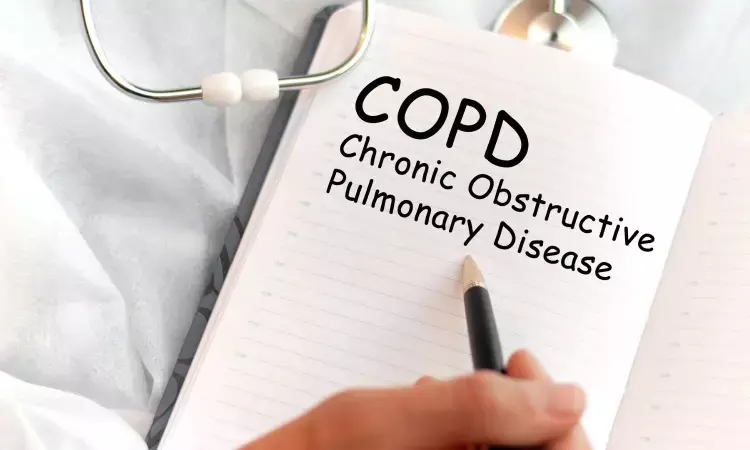- Home
- Medical news & Guidelines
- Anesthesiology
- Cardiology and CTVS
- Critical Care
- Dentistry
- Dermatology
- Diabetes and Endocrinology
- ENT
- Gastroenterology
- Medicine
- Nephrology
- Neurology
- Obstretics-Gynaecology
- Oncology
- Ophthalmology
- Orthopaedics
- Pediatrics-Neonatology
- Psychiatry
- Pulmonology
- Radiology
- Surgery
- Urology
- Laboratory Medicine
- Diet
- Nursing
- Paramedical
- Physiotherapy
- Health news
- Fact Check
- Bone Health Fact Check
- Brain Health Fact Check
- Cancer Related Fact Check
- Child Care Fact Check
- Dental and oral health fact check
- Diabetes and metabolic health fact check
- Diet and Nutrition Fact Check
- Eye and ENT Care Fact Check
- Fitness fact check
- Gut health fact check
- Heart health fact check
- Kidney health fact check
- Medical education fact check
- Men's health fact check
- Respiratory fact check
- Skin and hair care fact check
- Vaccine and Immunization fact check
- Women's health fact check
- AYUSH
- State News
- Andaman and Nicobar Islands
- Andhra Pradesh
- Arunachal Pradesh
- Assam
- Bihar
- Chandigarh
- Chattisgarh
- Dadra and Nagar Haveli
- Daman and Diu
- Delhi
- Goa
- Gujarat
- Haryana
- Himachal Pradesh
- Jammu & Kashmir
- Jharkhand
- Karnataka
- Kerala
- Ladakh
- Lakshadweep
- Madhya Pradesh
- Maharashtra
- Manipur
- Meghalaya
- Mizoram
- Nagaland
- Odisha
- Puducherry
- Punjab
- Rajasthan
- Sikkim
- Tamil Nadu
- Telangana
- Tripura
- Uttar Pradesh
- Uttrakhand
- West Bengal
- Medical Education
- Industry
1 in 5 TB Survivors Develop COPD Within 11 Years, Shows Long-Term Korean Study

South Korea: A new multicenter study from South Korea has identified critical risk factors contributing to the development of chronic obstructive pulmonary disease (COPD) in individuals treated for tuberculosis (TB), emphasizing the need for long-term respiratory monitoring. Published in the International Journal of Chronic Obstructive Pulmonary Disease, the research was led by Dr. Dong-Hyun Joo and colleagues from the Seoul National University Bundang Hospital. It sheds light on the incidence and predictors of TB-associated COPD over an extended follow-up period.
The study followed 351 patients across four Korean hospitals who had received anti-tuberculosis treatment for more than six months. These individuals were monitored over 11 years (132 months) to determine the incidence and risk factors for COPD following TB treatment. Data collection included clinical records, radiologic evaluations, and lung function tests, with statistical analyses conducted to assess incidence trends and identify predictive factors.
Over the study period, 71 participants were diagnosed with TB-associated COPD, corresponding to an overall incidence of 20.56 cases per 1,000 person-years. Patients who developed COPD were generally older at the time of their TB diagnosis, had a history of smoking, and demonstrated lower baseline lung function, particularly reduced forced expiratory volume in one second (FEV₁) and FEV₁/forced vital capacity ratios.
Key Findings:
- The incidence of COPD was significantly lower 11 years after tuberculosis treatment, with an incidence rate ratio of 0.49 compared to earlier periods.
- Older age at the time of tuberculosis diagnosis was associated with a higher risk of developing COPD (aOR 1.04).
- A baseline forced expiratory volume in 1 second (FEV₁) of less than 80% significantly increased the risk of COPD (aOR 3.98).
- A history of smoking was linked to a higher likelihood of developing COPD (aOR 3.23).
- Multilobar involvement of the lungs during tuberculosis infection was also a significant risk factor for COPD (aOR 2.04).
These findings emphasize the long-term pulmonary implications of TB, especially for individuals with compromised lung function or additional risk exposures. While the incidence declines more than a decade after treatment, the risk remains significant during the early post-treatment years, calling for targeted respiratory surveillance.
The study’s authors acknowledged certain limitations. COPD diagnosis was based solely on a fixed FEV₁/FVC ratio threshold (<0.7) without incorporating clinical symptoms. A few patients (2.2%) underwent spirometry without bronchodilator use, and CT scans were interpreted independently at each hospital without centralized review, potentially introducing variability.
Despite these constraints, the findings highlight the need for long-term lung function monitoring among high-risk TB survivors. The authors advocate for routine spirometry assessments for at least 11 years following TB treatment, especially in older patients, smokers, or those presenting with extensive lung involvement.
The authors concluded, "Further prospective studies with standardized imaging and extended follow-up are necessary to refine screening protocols and guide early interventions for TB-related COPD, ultimately aiming to reduce the burden of chronic respiratory disease in this vulnerable population."
Reference:
Joo DH, Kim MC, Sin S, Kang HR, Song JH, Kim HJ, Song MJ, Kwon BS, Kim YW, Lee YJ, Park JS, Lee JH, Lee YJ. Incidence and Risk Factors of Tuberculosis-Associated Chronic Obstructive Pulmonary Disease. Int J Chron Obstruct Pulmon Dis. 2025;20:2091-2102 https://doi.org/10.2147/COPD.S523732
Dr Kamal Kant Kohli-MBBS, DTCD- a chest specialist with more than 30 years of practice and a flair for writing clinical articles, Dr Kamal Kant Kohli joined Medical Dialogues as a Chief Editor of Medical News. Besides writing articles, as an editor, he proofreads and verifies all the medical content published on Medical Dialogues including those coming from journals, studies,medical conferences,guidelines etc. Email: drkohli@medicaldialogues.in. Contact no. 011-43720751


